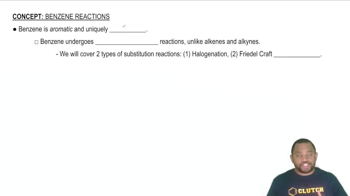Write the products for the following hydrogenation reactions:
(a)

 Verified step by step guidance
Verified step by step guidance Verified video answer for a similar problem:
Verified video answer for a similar problem:



 1:22m
1:22mMaster Hydrogenation Reactions Concept 1 with a bite sized video explanation from Jules
Start learning